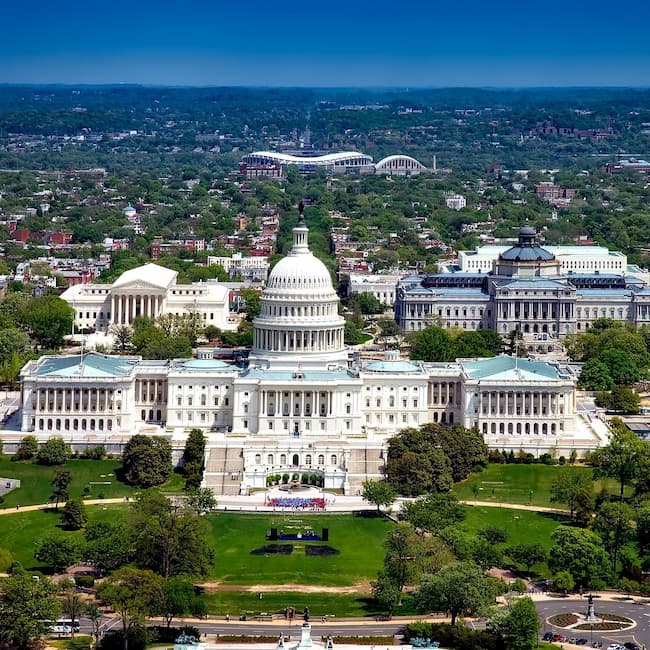Strategy
US Inflation Edges Higher – Reactions

After the US inflation rate increased slightly in July, investment managers discuss the impact and further potential interest rates hikes to fight inflation.
The US Bureau of Labor Statistics reported this week that US headline inflation rose slightly in July to 3.2 per cent from 3 per cent in June, driven by higher housing, car insurance and food costs.
Core inflation, which takes out food and energy components, increased by 0.2 per cent in July, while the annual figure declined slightly from 4.8 per cent to 4.7 per cent. These figures came roughly in line with expectations.
After hitting a peak rate of 9.1 per cent last summer, headline inflation has been moving closer to the Fed’s 2 per cent target. Despite the increase, the US Federal Reserve could still pause the interest rate hike in September. Here are some reactions to the rise from investment managers.
Nicolas Sopel, head of macro research and chief
strategist, Quintet Private Bank (parent of Brown
Shipley)
“While these readings may ease some pressure on the Fed to raise
interest rates further this year, at least with the Fed likely to
hold interest rates in September, the central bank will remain
careful as the balance of risks for inflation slightly tilts to
the upside for the second part of 2023. Inflation has
clearly marked a peak and continues to trend lower
toward the Fed’s target of 2 per cent. But unfavorable base
effects for energy, combined with rising food prices and housing
prices, and observed rents rebounding of late, could complicate
the Fed’s tasks. The Fed will update its projections at its
September meeting.”
Ryan Brandham, head of global capital markets, North
America, Validus Risk Management
“Core came in as expected, at 4.7 per cent. The result is
encouraging, although it remains a challenge returning to 2 per
cent due to base effects. Despite continuing progress, core
remains elevated. The figure for initial jobless claims has
jumped this week to 248,000 vs 230,000 expected, following a
slightly softer non-farm payrolls figure last week. This
illustrates early signs of cooling in what has been a very
resilient US labour market. The Federal Open Market Committee
(FOMC) would likely be encouraged by a gentle softening in the
labor market to help in its efforts to address inflation.
“Overall, inflation is grinding back toward target and the labor market is slowly cooling, but the FOMC will want to see yet more data before deciding in September if progress has been fast enough to warrant a pause, or if the balance of risks calls for another hike to ensure that inflation targets are met. Market pricing currently favors a pause, but the market has underpriced the Fed’s actions before.”
Gurpreet Gill, global fixed income macro strategist,
Goldman Sachs Asset Management
“The Fed has emphasized that its September meeting decision will
hinge on the totality of data accumulated between now and then.
The latest Consumer Price Index (CPI) data reinforces our view
that July likely marked the peak in the Fed’s hiking
cycle. However, we will be closely monitoring the evolution
of core PCE inflation and labor market rebalancing to determine
whether the disinflation trend is durable.”
Tom Hopkins, portfolio manager, BRI Wealth
Management
"Today’s inflation print will likely be taken positively. It will
reinforce the majority market view that the Fed will refrain from
hiking in September. In a little over a year, the Fed has raised
interest rates to a 22-year high. Fed chair Jay Powell said last
month that the central bank would decide on further rate
increases on a meeting-by-meeting basis. All eyes will focus on
next month’s CPI print which is published before the next rate
meeting in September. The risk for equity markets from here
is that the dominant market narrative has largely priced out
recession risk from risk assets, albeit these threats are not
completely off the table in my view.’’
Nathaniel Casey, investment strategist, Evelyn Partners,
a wealth management and professional services group
"Despite the annualized headline CPI rate reaccelerating slightly
in July (due to unfavorable base effects), the gentle 0.2 per
cent monthly acceleration for both core and headline CPI should
soothe markets and the Fed. There is still one more inflation and
job report to come before the next FOMC meeting on September 20,
so while committee members are unlikely to make their next
decision from this CPI print alone, it is yet another step in the
right direction. Evidence of softening wage growth in August’s
jobs report would likely be the final catalyst needed to signal
the end of the tightening cycle.”